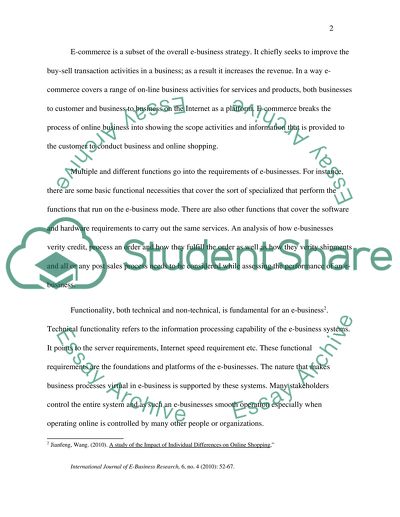Cite this document
(“Tools for E-Businesses Research Paper Example | Topics and Well Written Essays - 1250 words”, n.d.)
Tools for E-Businesses Research Paper Example | Topics and Well Written Essays - 1250 words. Retrieved from https://studentshare.org/information-technology/1435185-tools-for-e-businesses
Tools for E-Businesses Research Paper Example | Topics and Well Written Essays - 1250 words. Retrieved from https://studentshare.org/information-technology/1435185-tools-for-e-businesses
(Tools for E-Businesses Research Paper Example | Topics and Well Written Essays - 1250 Words)
Tools for E-Businesses Research Paper Example | Topics and Well Written Essays - 1250 Words. https://studentshare.org/information-technology/1435185-tools-for-e-businesses.
Tools for E-Businesses Research Paper Example | Topics and Well Written Essays - 1250 Words. https://studentshare.org/information-technology/1435185-tools-for-e-businesses.
“Tools for E-Businesses Research Paper Example | Topics and Well Written Essays - 1250 Words”, n.d. https://studentshare.org/information-technology/1435185-tools-for-e-businesses.


